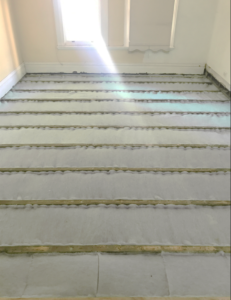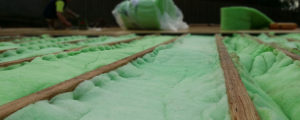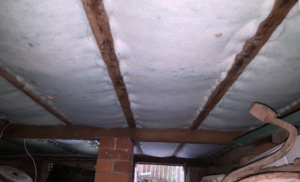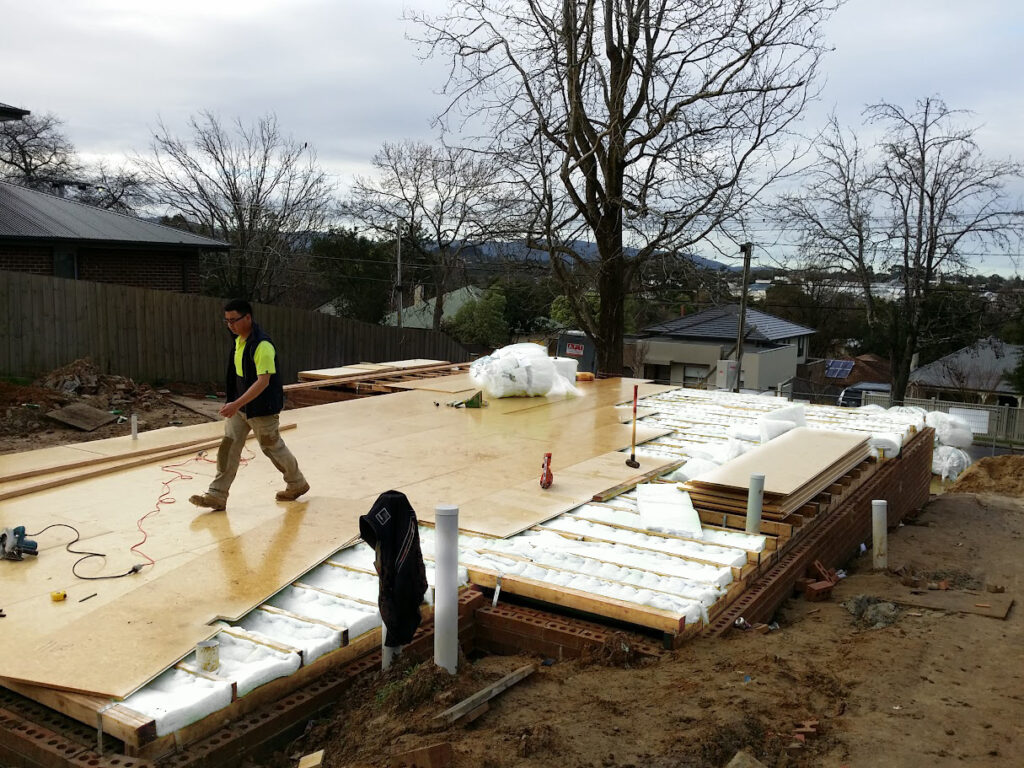
Installing underfloor insulation in a new build home is an essential step towards achieving superior energy efficiency and optimal comfort. In new constructions, you have the unique advantage of easy access to floor joists before the floorboards are laid, allowing for a seamless and thorough insulation process.
By proactively addressing underfloor insulation during the building phase, you can significantly reduce heat loss, enhance indoor air quality, and create a more sustainable living environment. This guide will walk you through the best practice for installing underfloor insulation in your new home, ensuring it remains cosy and energy-efficient for years to come.
The Best Feature of Polyester Insulation in a New Build!
Polyester underfloor insulation is an excellent choice for new build homes due to its remarkable resilience to moisture. Unlike other types of insulation, such as fibreglass, polyester does not suffer damage when exposed to water. This means that whether the insulation gets wet while still in its packaging, during installation, or after installation before the flooring is completed, the insulation will retain its insulating properties and structural integrity.
This unique benefit eliminates the need for costly replacements and reduces waste, providing a more sustainable and economical option for builders and homeowners. Fibreglass, on the other hand, must be completely replaced if it becomes wet, due to its propensity to allow the growth of mould. Replacement means significant expense and material waste. Choosing polyester underfloor insulation ensures a hassle-free installation process and long-term performance, making it the superior choice for new construction projects.
Stapling Insulation to the Top of the Joists
When insulating underfloor spaces in a new build or existing home, the process from above, before the floor installation, involves specific methods to ensure longevity and effectiveness. Here’s how to do it right.
Stapling the insulation along the top edge of the joists is straightforward and effective. This method requires careful attention to prevent bunching and ensure the insulation is tightly secured. Galvanised staples should be placed every 100-150mm for optimal hold. Ensure the insulation is snugly fitted and not bunched up. Bunched up insulation can create gaps, allow draught and attract vermin.
Insulation stapled from the top generally leaves a small gap between the insulation and where the floor will be installed over the top. This needs to be filled by tearing small sections of insulation, delaminating them, and placing them over the centre of the stapled insulation. This ensures a complete thermal barrier when the floor is installed, slightly compressing the insulation for optimal performance.
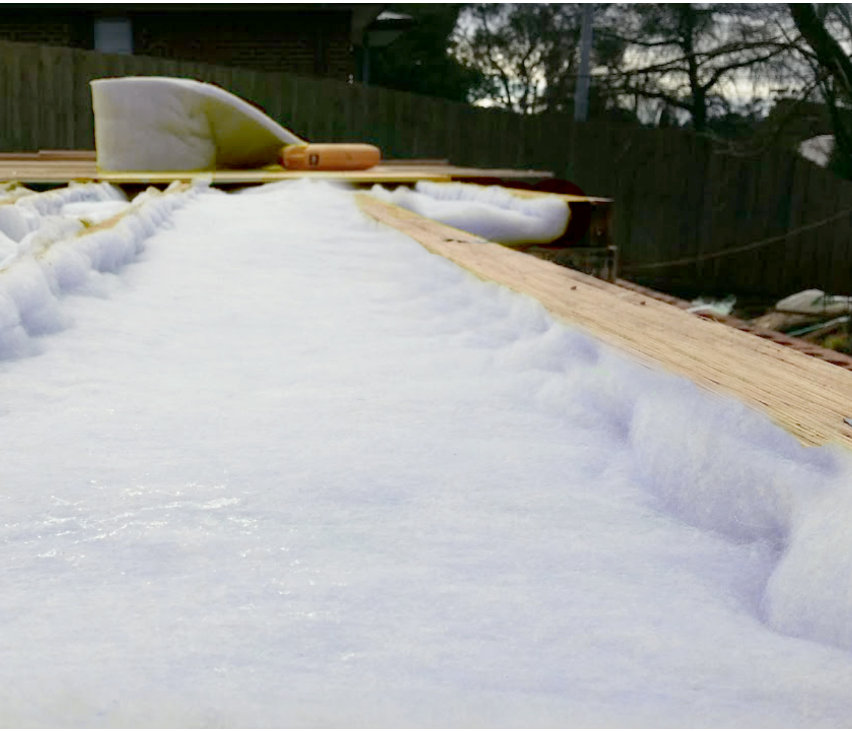
Underfloor Insulation Failures in a New Build
The images below demonstrate how NOT to install insulation in a “fit from the top”. Here are some areas that we can highlight:
- The insulation is too wide for the joists, so it is bunched up which is compressing the insulation. It will not be able to perform at the appropriate R value.
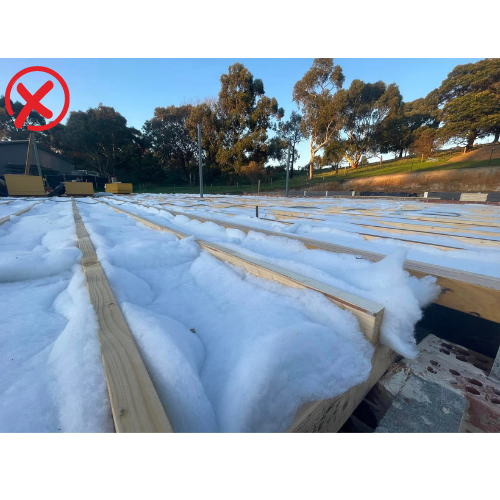
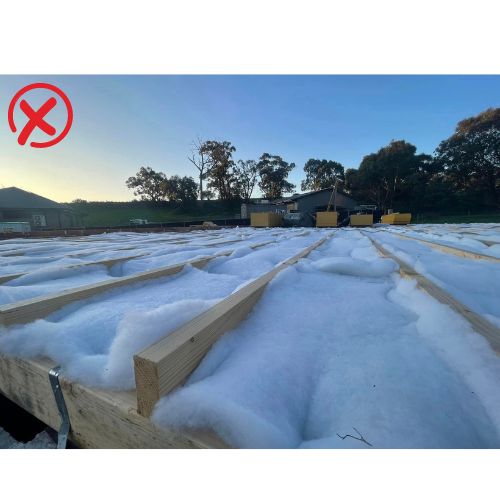
2. Either NO staples or not enough staples have been used to secure the insulation along the top of the joists.
3. There is too much space from the top of the insulation to where the floor will be placed. This creates a haven for vermin to exploit.
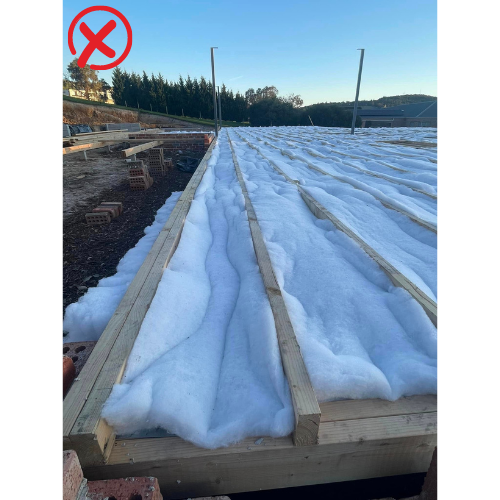
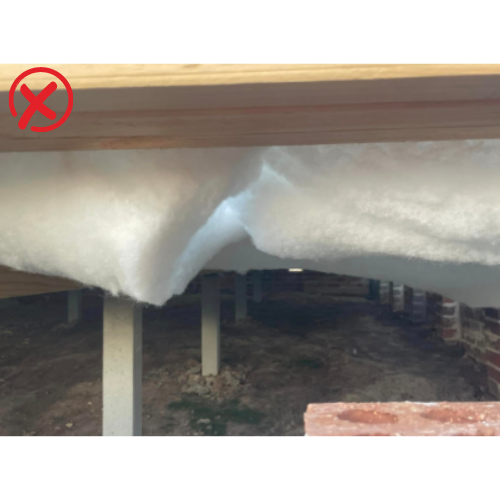
4. The insulation was friction fitted has fallen during installation and is already hanging down. That provides no benefit to the householder at all. The floor has not even been installed yet.
5. The insulation used here would be barely rated at R1.5. This is thin and wispy, has not inherent strength and is not even worth installing IMO.
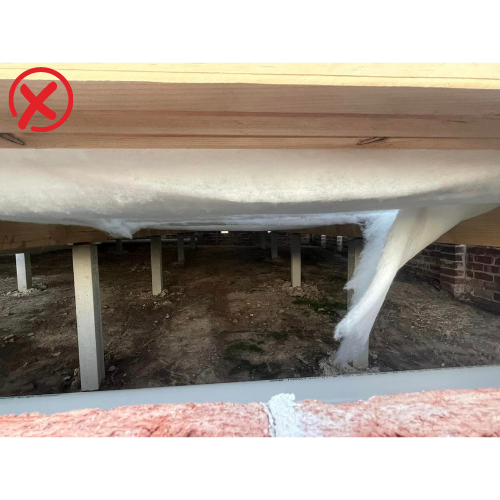
And the worst part? This installation was done by a qualified builder. We provided the householder with rectification support.
Common Issues and Solutions
- Improper Fit:
Insulation that is too wide for the joist space will bunch up, creating gaps that can become rodent havens. Go to the Turn and Tear method instead. - Insufficient Staples:
Fewer staples lead to sagging insulation, which reduces thermal effectiveness. Use staples every 100mm to 150mm on both sides of the polyester insulation roll. - Excess Space:
A large gap between the top of the insulation and the floor can allow vermin to enter. Filling this space ensures full thermal coverage.
- Fibreglass Insulation Cannot be Stapled:
Do not attempt to staple fiberglass insulation as it cannot hold staples effectively.
- Fiction Fitting:
Friction fitting without additional support is also not recommended, as gravity and floor vibrations over time can dislodge the insulation. Yes the friction fit quote will be tantalisingly cheap – but you won’t get the result you are wanting.
- Low R Value Insulation or Poorly Formed Insulation:
Using a low R value insulation – you want to use at least R2.5 to ensure there is sufficient bulk in the product to retain its inherent strength. Air-blow insulation will be light and fluffy and have no inherent strength to be held in place with staples. Avoid.
More Information
If you want to avoid disaster with your underfloor insulation, perhaps check out the most comprehensive give to underfloor insulation in Australia. This guide has been written by ecoMaster who have installed more under floor insulation than any other company in Australia – 20,000 homes over 20+ years. www.underfloorInsulationAustralia.com.au
We have put our knowledge to work in the creation of a free masterclass on Underfloor Insulation. You can register and watch the masterclass here.


